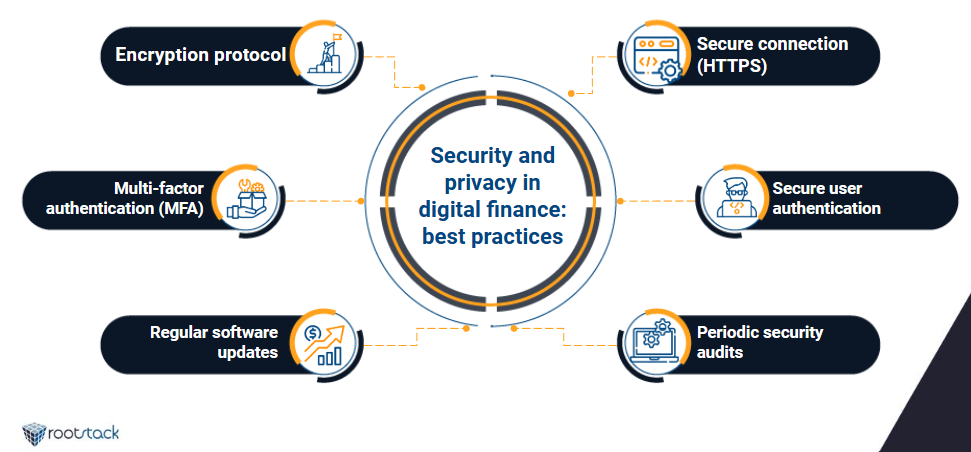Security and privacy in digital finance: best practices
January 12, 2024
Table of contents
Quick Access

The financial processes and extensive paperwork that banking institutes require of their clients are already a thing of the past: for several years, digital finance, or Fintech, has dominated the market and has gained favoritism among clients. Although this has brought countless benefits, it also comes with a great risk: privacy vulnerabilities.
Fintech platforms are dominating the financial industry as they offer a fast option with few limitations to access money, make transactions and other movements, but because they live entirely in a digital environment, it makes them vulnerable to attacks, data theft and other types of security intrusions.
What to do to ensure privacy on digital finance platforms?
Cybersecurity is one of the most important aspects when working with any software product, this includes digital finances, so the measures taken to protect the privacy of users cannot be underestimated, these must be solid and well thought out by professionals.
At Rootstack, we have taken the task of listing the best practices to guarantee that user data and privacy on a digital finance platform will be protected:
Encryption protocol
End-to-end encryption of information is necessary as a superficial layer behind which the information is hidden and is not easily accessible. This cybersecurity method is used to safeguard data during transmission, ensuring that sensitive information, such as personal data and financial credentials, remains confidential and protected from unauthorized access.
Multi-factor authentication (MFA)
The digital finance platform should require users to undergo multi-factor authentication to add an additional layer of security. Combining passwords with verification codes sent to registered mobile devices or biometric authentication methods significantly improves the protection of user accounts, minimizing the risk of unauthorized access.
Regular software updates
Keep all software up to date, including operating systems, browsers, and financial applications. Regular updates typically include security patches that address vulnerabilities discovered since the last version, reducing the risk of exploitation by malicious entities. Computer viruses are changing day after day, so security systems must adapt to this pace.
Secure connection (HTTPS)
Ensure all financial transactions are conducted over a secure, encrypted connection. Using HTTPS (Hypertext Transfer Protocol Secure) ensures that data exchanged between the user's device and the financial platform remains confidential and protected from interception.
Secure user authentication
Users are a fundamental part of security measures and must be seen as an active and changing asset. Security and authentication mechanisms should be implemented, including various password policies (e.g., changing it every few days), as well as good security questions and biometric authentication, taking advantage of modern equipment.
Periodic security audits
Conduct regular security audits and assessments to identify and address potential vulnerabilities. Collaborate with cybersecurity experts to conduct penetration testing and ensure your digital finance platform can withstand evolving cyber threats.
Privacy and Consent Policies
Be transparent about your platform's privacy policies and obtain explicit consent from users before collecting, storing or processing their personal information. Clearly communicate how your data will be used and ensure compliance with data protection regulations.
Fraud detection and monitoring
Implement advanced fraud detection systems that continually monitor transactions for suspicious activity. Use machine learning algorithms to analyze patterns and anomalies, allowing for rapid identification and response to potential fraudulent transactions.
Compliance with Regulatory Standards
Stay aware of and comply with industry-specific data protection laws and regulations. Adhering to established standards ensures not only legal compliance but also reinforces the commitment to safeguarding user information.
Securing digital financial transactions requires a multifaceted approach that combines technological solutions, user education, and compliance with regulatory standards. By implementing these best practices, financial institutions and digital finance platforms can build a strong defense against evolving cyber threats and foster trust among their user base.
Rootstack has a team with the knowledge and experience necessary to put these tips into practice and thus ensure that any software project within a financial company has sufficient security measures.
We recommend you on video
Related Blogs

What programming language is used for API development?

ERP Software: Benefits for the banking industry

Best Practices for Hiring an RPA Developer

BPM solutions for the hotel industry



